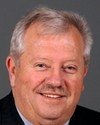I have never thought of going to Nunavut, so I don't know what's there, if there are any restrictions or not.
Evidence of meeting #37 for Indigenous and Northern Affairs in the 40th Parliament, 2nd Session. (The original version is on Parliament’s site, as are the minutes.) The winning word was tourism.




